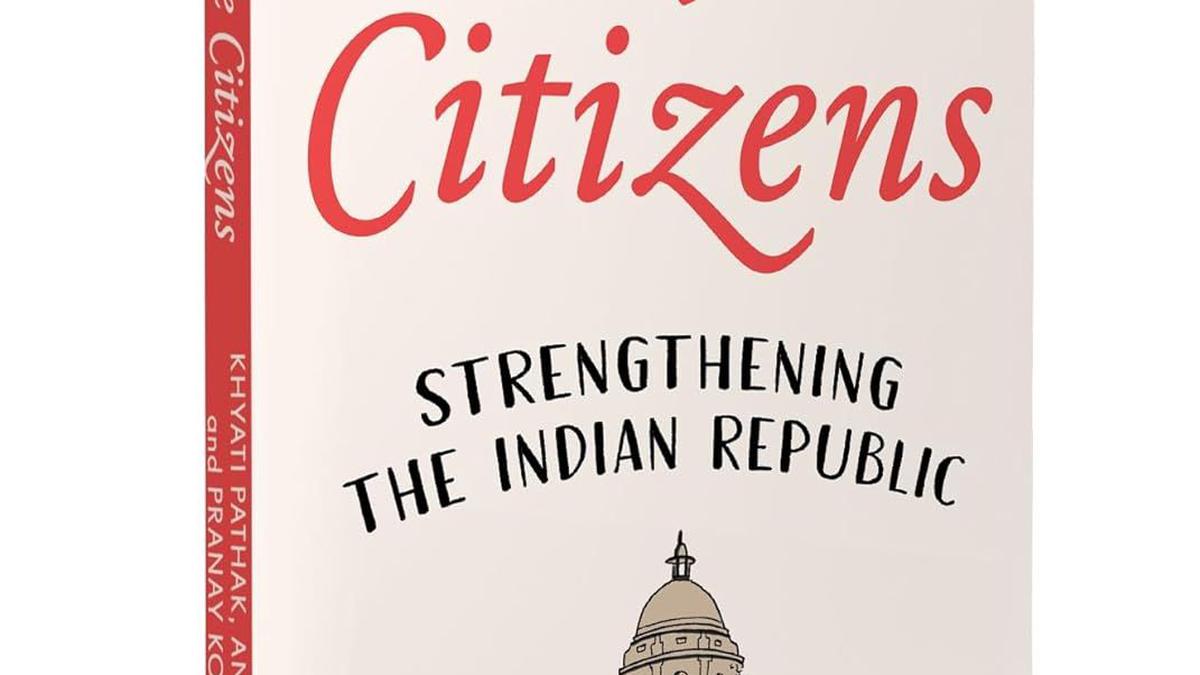
Interview with the authors of We, the Citizens: Strengthening the Indian Republic
The Hindu
"We, the Citizens" simplifies public policy concepts through engaging graphics, empowering Indian citizens to make informed choices.
It is election year in India; a time for appraisal reports on how our leaders have performed in office. There’s no dearth of information on the next batch of aspiring political personalities and the parties they belong to, but do we really understand anything beyond the din of canvassing and existing realpolitik?
Perhaps it would help to revisit the theory behind the practicals, say Khyati Pathak, Anupam Manur and Pranay Kotasthane, the trio behind We, the Citizens: Strengthening the Indian Republic, a graphic explainer about abstract political policy concepts that they feel the Indian public needs to know in order to make informed choices.
The creative collaboration came about after Khyati, an IT consultant-turned-artist, completed her Graduate Certificate in Public Policy (GCPP) at the Takshashila Institution, Bengaluru, where Anupam and Pranay teach. She sent them a five-page cartoon summary of the course. “We were blown away, and saw the possibility of a collaboration to attempt a unique book to simplify public policy for beginners. A writer-cartoonist, a public policy researcher, and an Economics professor is a combination hard to come by! What we share is a desire to contribute towards creating civic discourse. Comic books provide an approachable introduction to a subject,” says Pranay.
Currently serving as the deputy director at Takshashila Institution, he has co-authored the best-sellers Missing in Action: Why You Should Care about Public Policy and When the Chips are Down: A Deep Dive into a Global Crisis. He co-writes Anticipating the Unintended, a newsletter on public policy ideas, and co-hosts Puliyabaazi, a popular Hindi-Urdu podcast on politics, policy and technology, with Khyati and tech entrepreneur Saurabh Chandra.
Though the subject is serious, humour is inserted throughout the text. For instance, readers are cautioned about the administration’s overarching ambition to act like Rajinikanth in trying to address issues. One policy to meet many objectives is likened to the Tamil superstar’s movie trick of splitting one bullet to deal with two villains. “This approach may work in movies but, in reality, we often end up with a policy that fulfils none of the intended objectives,” say the writers in the chapter ‘There is Just One Rajnikanth!’
“Despite being a vibrant democracy, India lacks an informed debate around some of the most fundamental issues that affect our daily lives. Politics is often centred around personalities and rhetoric. We, the Citizens is a pathway for those who want to be engaged citizens,” says Anupam, assistant professor of Economics at Takshashila Institution, and editor of Indian Public Policy Review.
The book makes an effort to present complicated ideas pictorially without being boring. Khyati, whose artwork has featured in children’s magazines Pluto and Cycle, and on comics platform Bakarmax, says the minimalistic style is key. “In the book, three main characters who represent common citizens are in dialogue with each other. The words and panels go hand in hand; often, a simple sentence is elaborated in the illustration,” she says. “We chose examples steeped in the Indian context to make it feel relatable to people from different backgrounds.”













